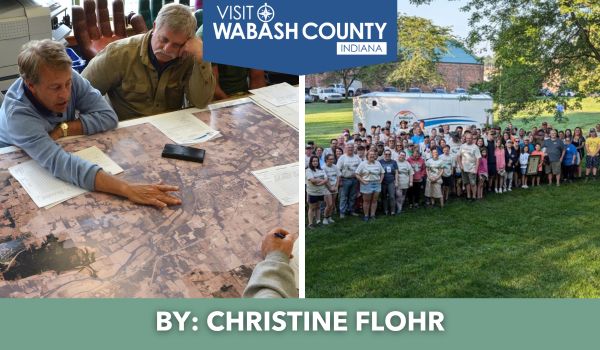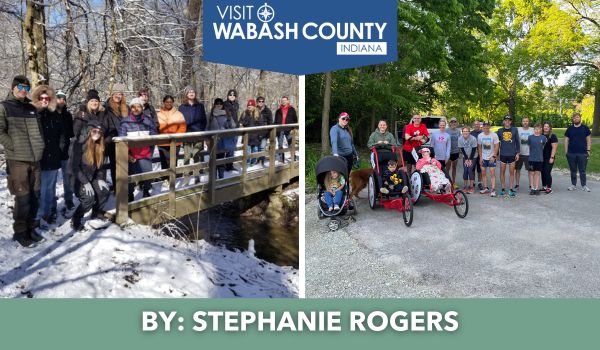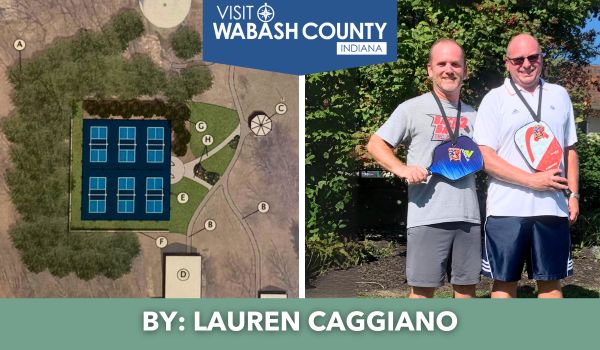From Blossom to Harvest: Behind the Scenes of An Apple Orchard
By: INPUT Fort Wayne
Behind the scenes at any orchard, pollinators are hard at work playing an indispensable role in the growth and success of each season’s fruit. Apples, pears, peaches, and many other fruits all depend on the complex pollination process led by honeybees, butterflies, and other pollinators.
In Wabash, Indiana, at David Doud’s Countyline Orchard, the Doud family knows this process well– and understands the science and art that goes into a successful harvest.
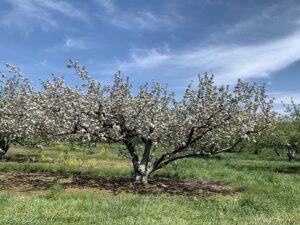
Valerie Doud, a retired biology teacher and co-owner of the orchard, says she is passionate about growing healthy food for her community and loves the chance to educate others on the many variables that make up the pollination process.
“The fruit you eat, and most food that is grown, all comes from the basic biology of taking the pollen, fertilizing the plant, collecting its seeds, and growing them out,” she says. “Some pollen can be carried by the wind, but because of the structure of an apple’s flower, the pollen needs to be collected on the pollinator and carried to it.”
While the biology lesson may seem simple, orchestrating this process for a whole orchard requires significant planning and preparation to ensure each step is successful. For an apple to be ripe and ready in the fall, preparation begins early in the spring.
The pollinators, in this case, honey bees, need to be placed in the orchard before the flowers open, which is usually in March or April for apples. The Douds work with beekeepers from Clover Blossom Honey in LaFontaine, Indiana to bring honey bees to the orchard. Then, they help place the hives once the apple blossoms are ready.
Valerie explains that apple blossoms only open for a short window of time and must be visited by a pollinator during that time. Even if a blossom gets pollinated, external forces like wind and rain can remove the pollen from a blossom before it has the chance to grow fruit, making the process tricky.
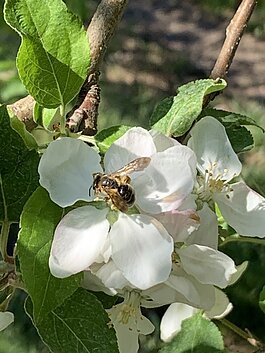
If the blossom does get pollinated correctly, the seed will then start growing and form an apple. Each seed that you see in an apple started as an ovule, pollinated by a grain of pollen.
The trees also need to be pruned properly in order to give each apple the space to grow and to avoid producing too much fruit on one tree.
Valerie explains another way they prep for apple season at the orchard is through apple breeding— pollinating one type of apple tree with the pollen from another, like crossing a Honeycrisp with a Fuji.
When implementing this cross-pollination, Valerie says their team looks out for several characteristics in order to produce a healthy, flavorful, and successful apple.
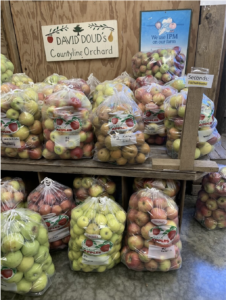
“Disease resistance, frost resistance, and the ability for the apple to stay on the tree are all important factors,” she says. “Flavor and texture are also huge for our customers. We like researching crosses that our customers love and are reasonable for us to take care of.”
One of their most successful apple breeds has been the EverCrisp apple, a cross between Honeycrisp and Fuji apples. It was first grown in 2008 at their orchard in Wabash County.
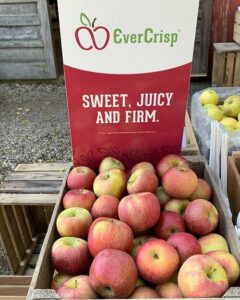
Valerie’s husband, David, shared some of the apples with the Midwest Apple Improvement Association (MAIA), an organization established to aid apple growers in developing and producing healthy apples that meet quality requirements, once they were ready. The EverCrisp stood out to the group for many reasons — crisp texture, sweet flavor, and keeping ability, to name a few.
The EverCrisp was officially released by the MAIA in 2014, and any grower who is a member of MAIA could produce the apple after that. Now there are more than two million EverCrisp trees planted all around the world.
“I love that we’re growing something that’s healthy for people to eat, and it is delightful to live here in Wabash County and be part of this community,” Valerie says.
David Doud’s Countyline Orchard is open from 1 – 5 PM every Tuesday, Friday, and Saturday. You can also find their fruit at several local grocery stores and farmer’s markets.
